- 4 Aktuální žádosti o pomoc Poraďte svým kolegům
- Požádejte o pomoc
- Podejte dotaz do fóra
- Vložit hotový případ
- LOG Decoder
Žádost o pomoc
Žádost o pomoc vyplňte, pokud máte rozpracovaný diagnostický případ na konkrétním vozidle, u kterého potřebujete pomoci zjistit skutečnou příčinu závady.
Pro naše nekonvenční metody je nutný základ znalostí a mít vlastní vybavení minimálně pro "logování", lépe však osciloskop. Nejlepší přípravou pro práci jsou naše videoškolení a akademie.
Jak to funguje?
Do online formuláře v jednotlivých krocích vyplníte všechny důležité údaje k případu a poté Vám ostatní registrovaní diagnostici poradí v komentářích*.
Supervizor a moderátoři FCD.eu samozřejmě vše doplňují a kontrolují správnost informací, aby cesta vedla ke správnému cíli.
Požádat o pomocDiagnostický případ
Jeep – Erratic idle with irrelevant DTCs
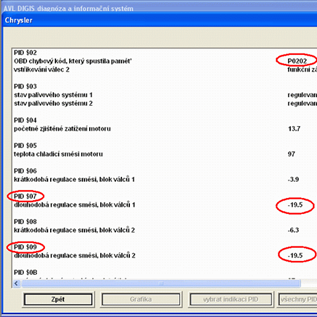
Informace o vozidle
| VIN: | |
| Výrobce: | Jeep |
| Model: | Grand Cherokee |
| Rok výroby: | 2000 |
| Kód motoru: | 4,7L V8 |
| Typ motoru: | |
| Výkon (kW): | 0 kW |
| Převodovka: | Automatická |
| Palivo: | Benzín |
| Najeto: | 0 km |
- paměť závad nečtena
- nelze se spojit / asi chyba auta
- během jízdy
- [P0202]
- trvalá závada
- sporadická závada
Závěr
VOZIDLO JSEM NEOPRAVOVALFault description:
The idle rpm are erratic and surge between 700 and 1 500 rpm without accelerator pedal input. The fault is intermittent, but occurs quite often. Sometimes under partial load and constant speed the engine misfires. After longer periods of driving the ECU reports fault codes related to injectors 2, 4, 6, 8, 3, and 5! Only the cylinder #1 injector according to OBD is not deffective. During idle the engine is ocassionally not smooth. The authorised Jeep dealer technicians are aware of this and it is considered as normal on all 4.7L engines.
Fault code description:
1= Fuel injection, cylinder #2, malfunction
Repair:
Replace all spark plugs
Summary:
The DTC descriptions are different to the actual fault. The O2 sensor signals were surprisingly interpreted as clear faults on multiple cylinder injectors. While the cause could have been a defective fuel pump, fuel filter or in our case burned spark plugs. This is a typical case and clear proof that the workshop has to verify the OBD reports with an oscilloscope.




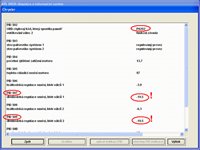
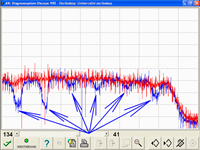

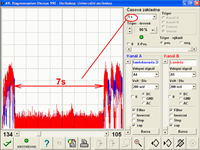
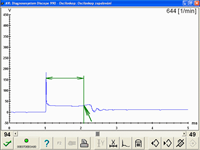
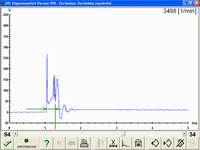
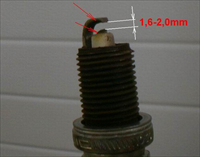
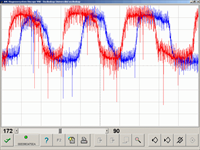
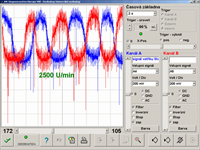
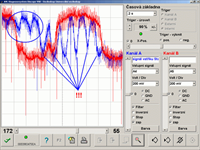
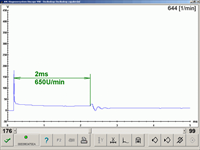
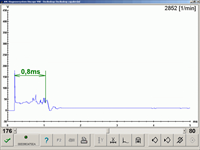


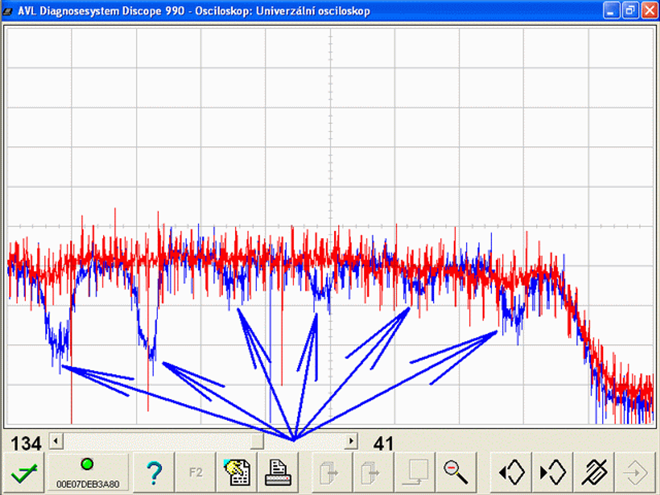
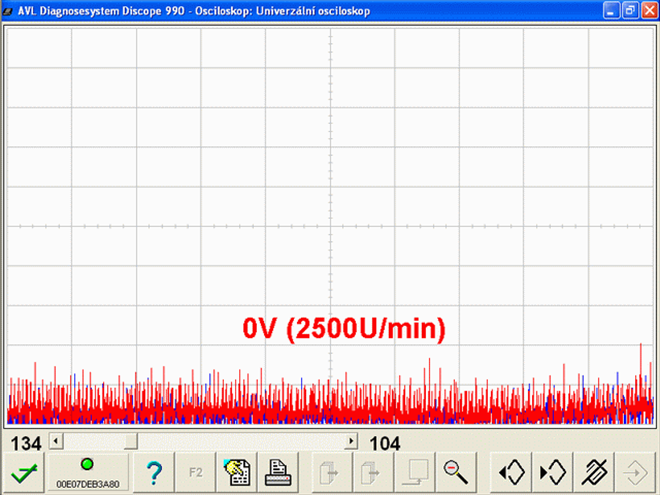
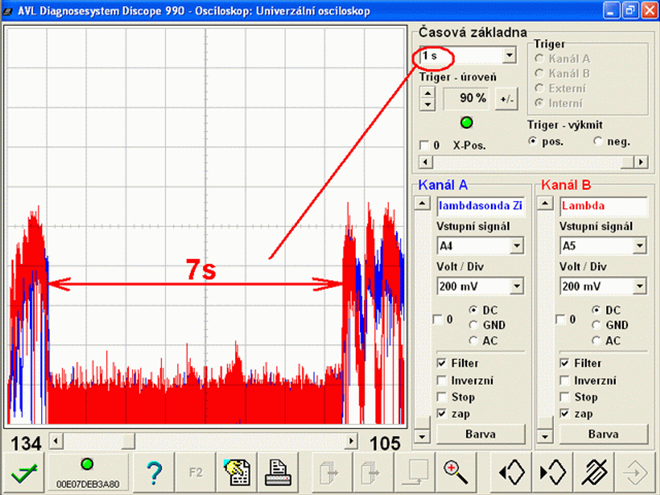
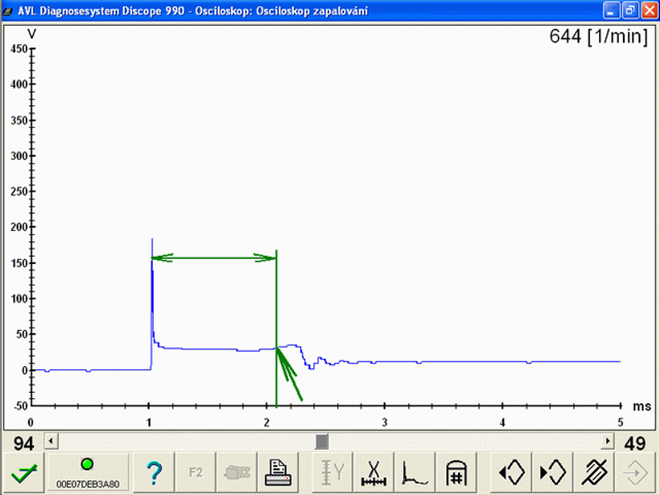
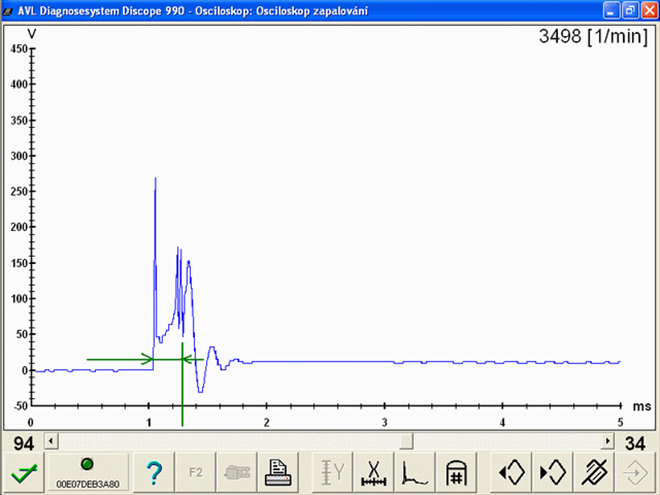



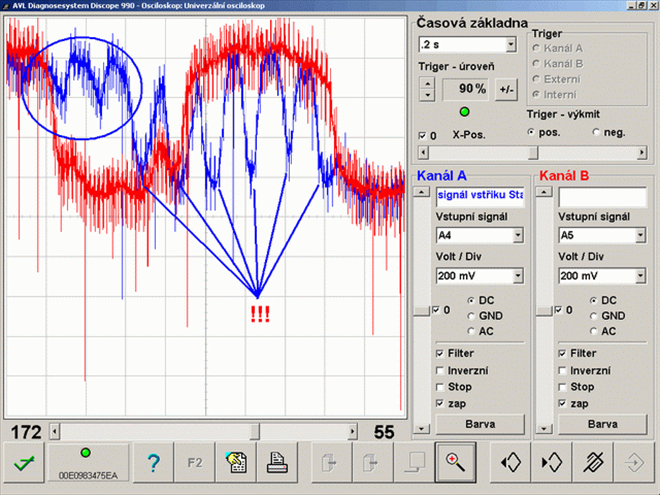
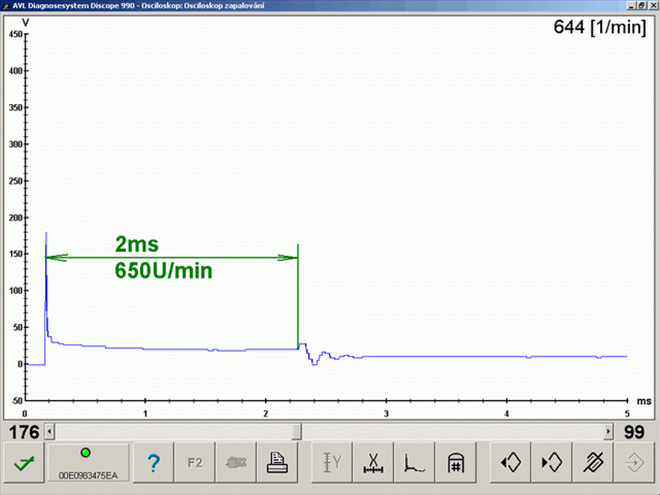
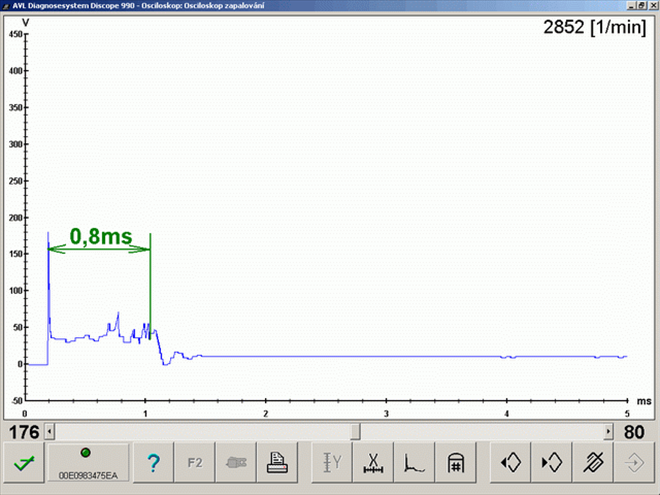
Komentáře (0)